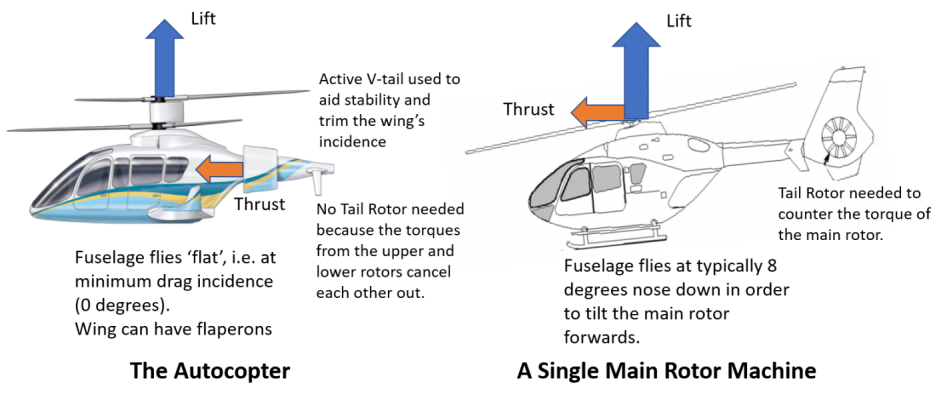The Propulsion Fan
The Propulsion Fan is there to provide all the forwards thrust and braking that is need in normal flight. In hover, however, it is the main rotor that moves the aircraft in all directions needed to maintain a position, either as instructed by the pilot or operating automatically under GPS control.
The key thing for Horizon is having a Propulsion Fan that allows the aircraft to fly ‘flat’, i.e. without it having to fly nose down in order to tip the main rotor’s lift vector forwards. Four important advantages stem from this:
- The main rotor can run at a much lower incidence during high-speed flight because it does not now have to provide any forwards thrust. Whilst running at a lower incidence, it generates less drag and so consumes less power.
- The fuselage can now run constantly at near to its minimum drag incidence, so also consuming less power.
- It will now be possible to fit a wing to the aircraft, again to offload the main rotor and so improve its efficiency at high speed. The incidence of the wing could then be adjusted by altering the incidence of the fuselage, using either the main rotor or V-tail.
- From a controls point of view, it disconnects the function of ‘lift’ from that of ‘propulsion and braking’, so eliminating nearly all of the requirement to coordinate a group of levers and pedals. There is now one lever that controls lift and another that controls forwards motion and braking.

The configuration of Coaxial Main Rotor, Propulsion Fan, V-tail and possible Wing has therefore been chosen primarily to aid the energy efficiency of the aircraft and its ease of control. The energy balance sheet is not however all positive and actually quite difficult to calculate without the help of a CFD analysis. The fan, for example, creates thrust by accelerating a relatively small weight of air by a relatively large amount (compared to the main rotor’s downdraft) so its propulsive efficiency is lower than that of the main rotor. This will then be counterbalanced somewhat by the gain in propulsive efficiency created by the fan’s ingestion of the fuselage’s boundary layer and the positive influence that the fan will have in the flow around the rear of the fuselage.
There are also noise considerations. The fact that the main rotor only has to produce lift can also means that it can run more slowly than it normally would and this will significantly reduce its noise. Also, the fact that the fan is ducted means that it too can be silenced by the application of noise absorbent linings.